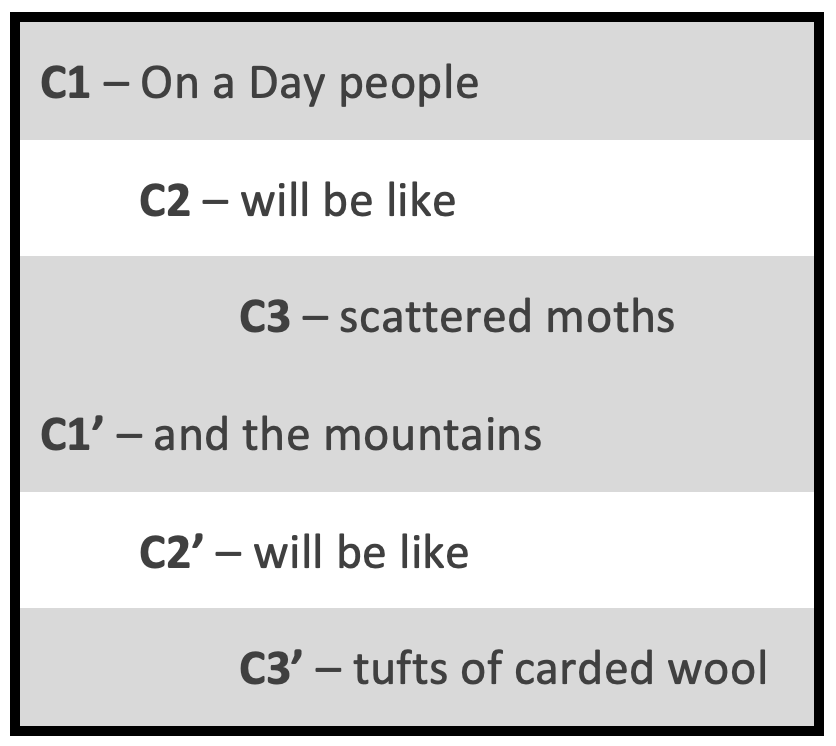Sūrat al-Qāriʿah (The Crashing Blow) is a very early Makkan sūrah, which powerfully describes the onset of Judgment Day. It has been shown that it can be rearranged as a mirror structure.1 The first half describes the chaos – succinctly named al-Qāriʿah – occurring at the onset of Judgment Day, while the second half informs us of the outcome of said Judgment.
CONNECTIONS
[A]/[A’] – The opening āyah, al-Qāriʿah, is intentionally ambiguous in meaning, with multiple translations capable of describing it, including “the Crashing Blow,” “the Calamity,” and “the Crushing.” On the other end of the sūrah is a “Blazing fire (nārun ḥāmiyah).” One refers to Judgment Day while the latter refers to a possible consequence of judgment. Not only do they both refer to divine justice, but they are also related by their rhyme, (qāriʿah/ḥāmiyah).
[B]/[B’] - Both sections ask, “What will convey to you what X is (wa mā ‘adrā-ka ma X)?”, the former about “the Crashing Blow” and the latter about “the Abyss.” Interestingly, both questions are followed by very brief descriptions, as if to allude to our inability to grasp the full reality of these cosmic events.
[C]/[C’] – The center contains two parallels. [C] is set up as:
And [C’] can be arranged as so:
[C] focuses on describing judgment day in all its chaos. People scatter like moths, and the most stable objects in this life, mountains, blow away as if made from wool. Meanwhile, [C’] describes our accounting in a succinct manner. We also see an inversion of norms between these two sections. Things that usually carry real weight, people and mountains, are easily moved around on Judgment Day. In contrast, our deeds, which have no physical weight to them in this life, will tip the scales of our judgment and determine our final abode.
Before concluding, it is worth quoting Richard Bell (died 1952), a Scottish Christian who wrote a translation of the Quran. On this particular sūrah he commented (with slight modifications for clarity):2
“This sūrah is a fragment, or a collection of fragments. Vv. 1–5 were probably an explanation of the word al-Qāriʿa which occurs in āyah 4 of sūrah 693. Whether vv. 6–9 originally formed part of the passage is doubtful. They may have been added later or they may have been removed from Surah 69, being replaced by what now stands there at v. 19 ff. [...]. Vv. 10, 11 are certainly of the nature of a gloss to the word ḥāwiya, v. 11, whether added by Muhammad himself, or by a later hand, may be left undecided [...].”
This is yet another example how the organization and coherence of the Quran can be lost (and misattributed) without the proper tools and reflection applied to it.
And Allah ﷻ knows best.
This is paraphrased from Michel Cuypers, “Semitic Rhetoric as a Key to the Question of the Naẓm of the Qur’anic Text,” Coherence in the Qur’an 13.1 (2011): 7-9
Richard Bell, The Qur‟ān. Translation, with a critical re-arrangement of the Surahs, Edinburgh, T. & T. Clark, 1950 (first ed. 1937–39), p. 674.
“Thamūd and ʿĀd denied al-Qāriʿah.” – 69:4






